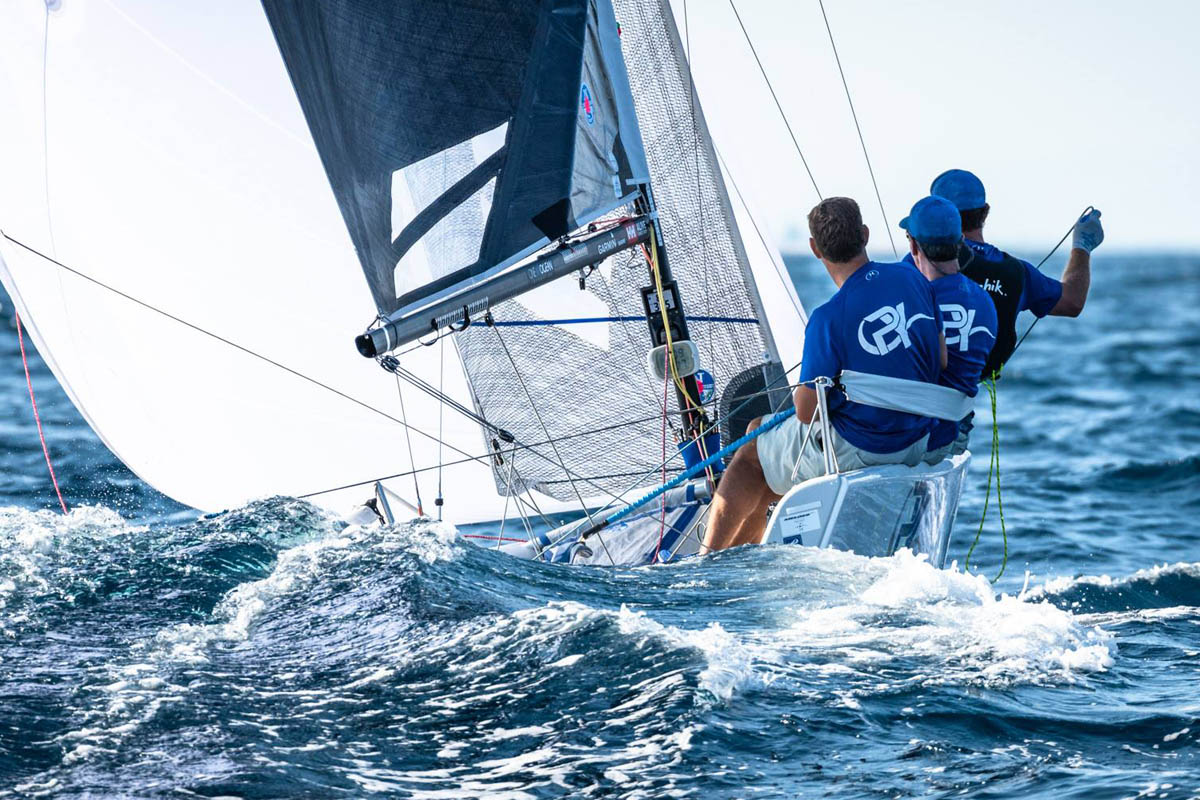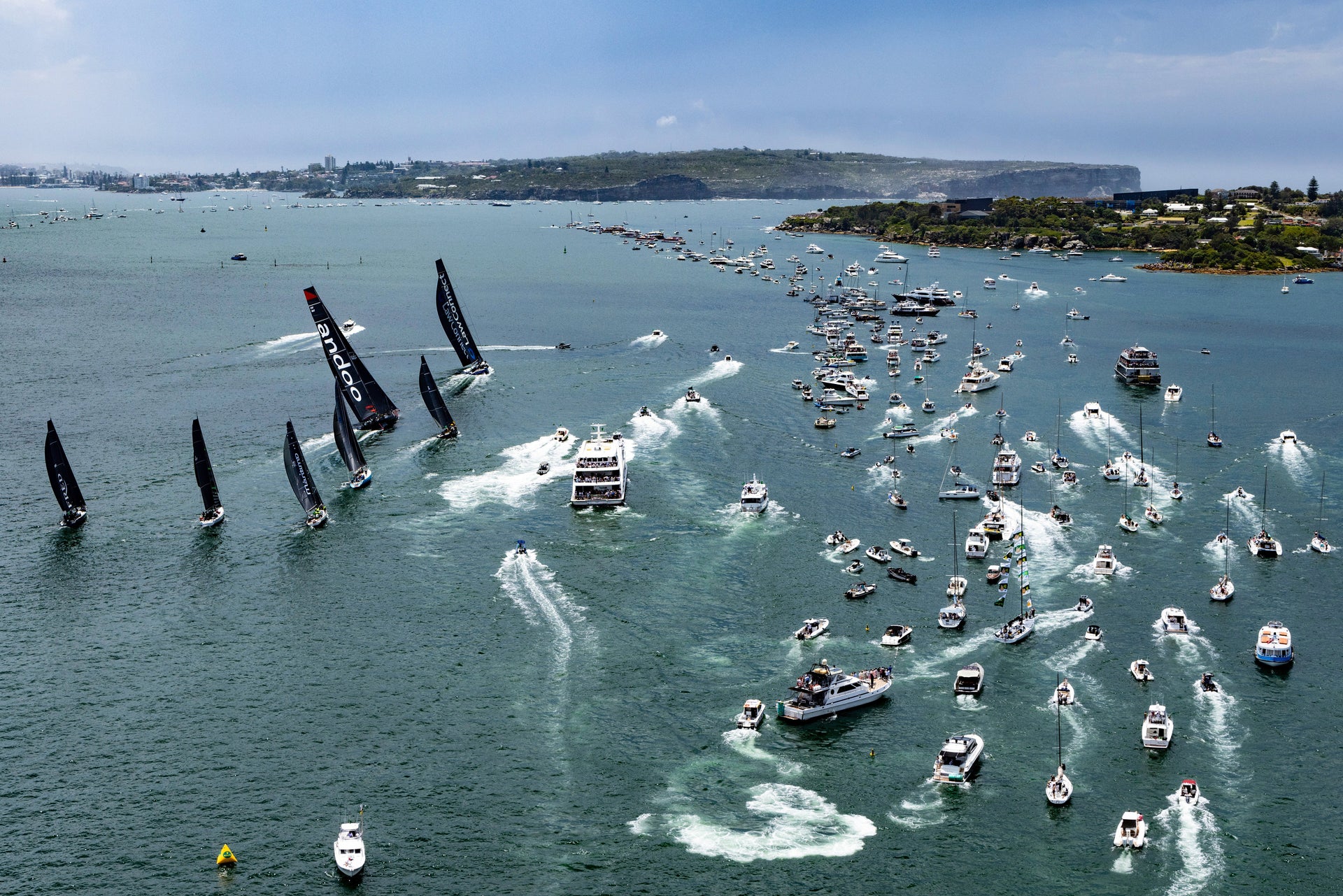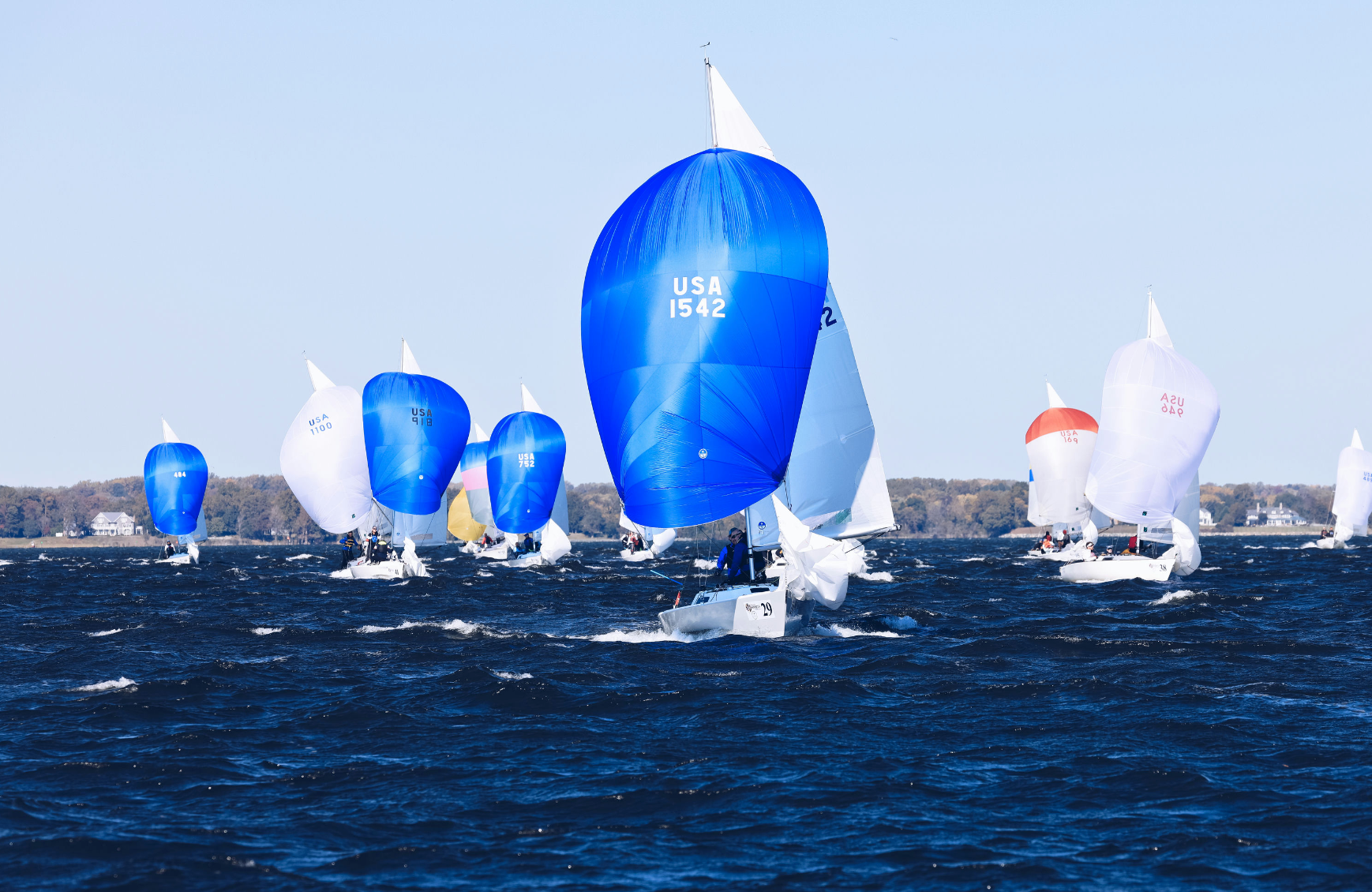MELGES 20 SPEED READING
MELGES 20 WORLDS: SPEED READING
Two-time World Champion Drew Freides Shares His Views on Winning Speed

The waves were bumpy and the wind was hard to read at the 2018 Melges 20 Worlds in Cagliari, Italy. That put a premium on speed at all times for the crew of Pacific Yankee, which earned its second championship title in a row.
Racing in a tough 38-boat fleet, Drew Freides, Morgan Reeser, and Charlie Smythe won the last two races to earn the title by a point. What made the difference?
Skipper Drew Freides credits his teammates, coaching, planning, and preparation, and says one key, after winning the 2017 Worlds, was adopting the attitude, “We’ve got to improve because everyone else is going to improve.”
“One thing I’m good at is that I’m scared of failure.” Drew says, “so I’m never content. I always feel like someone’s going to pass me and be better.”
Build a Speed Matrix
“Over the year, we focused on a matrix for boat setup,” Drew says. “Vince Brun, our coach, was maniacal about it. When we’re racing we don’t want to think about boat setup—we want to focus on sailing well and sailing smart. The matrix is marked as number of turns on and off the uppers and the diamonds and is easily repeatable. We developed ours by starting with the North Sails Tuning Guide, and it evolved from there based on our work with sail designs and our observations.”
“We always put the rig back to base setting at the end of the day,” he adds. “Sometimes we check measurements with calipers and once in a while with a tension gauge.”
Think “Dead Stick” and “Unload the Boat”
Drew says to go fast the boat can’t be loaded. It should have more of an “easy” feel. “On our boat,” he says, “Morgan is focused on tactics, and Charlie on speed, but Morgan is holding the mainsheet. When we wanted speed, Charlie would say to him ‘free it up,’ meaning to unload the boat. We’d go for a flatter mode for the sails, put the bow down, and get it ripping. When we wanted height, I’d ask for more load on the helm, which meant more leech tension, rounder sails.”
“The boats are tippy, and heel is your enemy. You’d be surprised how much the boats heel. You really want the tiller to feel like a “dead stick”…the less feel we had, the faster we went. It takes time getting used to it.”
“The upper shrouds on a Melges 20 are on cars,” says Drew. “Charlie spent a ton of time adjusting uppers, forward and back. We would set ourselves up going off the starting line with the car forward. We’d go a tenth or two slow, climb and build our hole, then once we were in clear air, we would move the cars back and put the bow down. Once you get the boat going fast, it points high on its own.”

Upwind in Lumpy Conditions
At Cagliari, Drew says, “it got very lumpy, which put a premium on accelerating and rebuilding speed quickly. We needed a good balance of sail depth for power, but not so much that we couldn’t put the bow down and go.
“On the second to last day, port tack was brutal. We had a great setup and could put the bow down and rip up to 5.9 knots. When you hit waves, it was important we were already going fast and not trying to climb. If Charlie said, ‘Bad set coming,’ Morgan would ease the main and I’d bear off. If Charlie said, ‘Flat spot,’ Morgan would sheet in and we’d start climbing. The biggest gains to be made were in terms of height, but that’s only because we were already going fast.”

Same Speed and Lower, Downwind
“The goal downwind was to sail the same speed but lower,” says Drew. “ When it got lighter, it was an uncomfortable low mode. With spinnaker sheet in his hand, Charlie coached me how low we could go. We were constantly looking to soak and never have the boat loaded. We never had enough wind at the Worlds to sail higher and get beyond lazy planing.”
“Some thought we had special sails, but for the record, we used North’s R-2 and V4-2R, off the shelf. We used the V4 more than you would think, down the wind ranges, because it let us heat it up and get onto some of the waves. The R-2 is not as comfortable reaching so we sometimes used the planing chute even though we were trying to soak low.”

Read more about Pacific Yankee’s victory at the 2018 Worlds
“In the 8- to 12-knot range when not overpowered, use rounder sails and hike really hard. We were sometimes too quick to depower.”

























